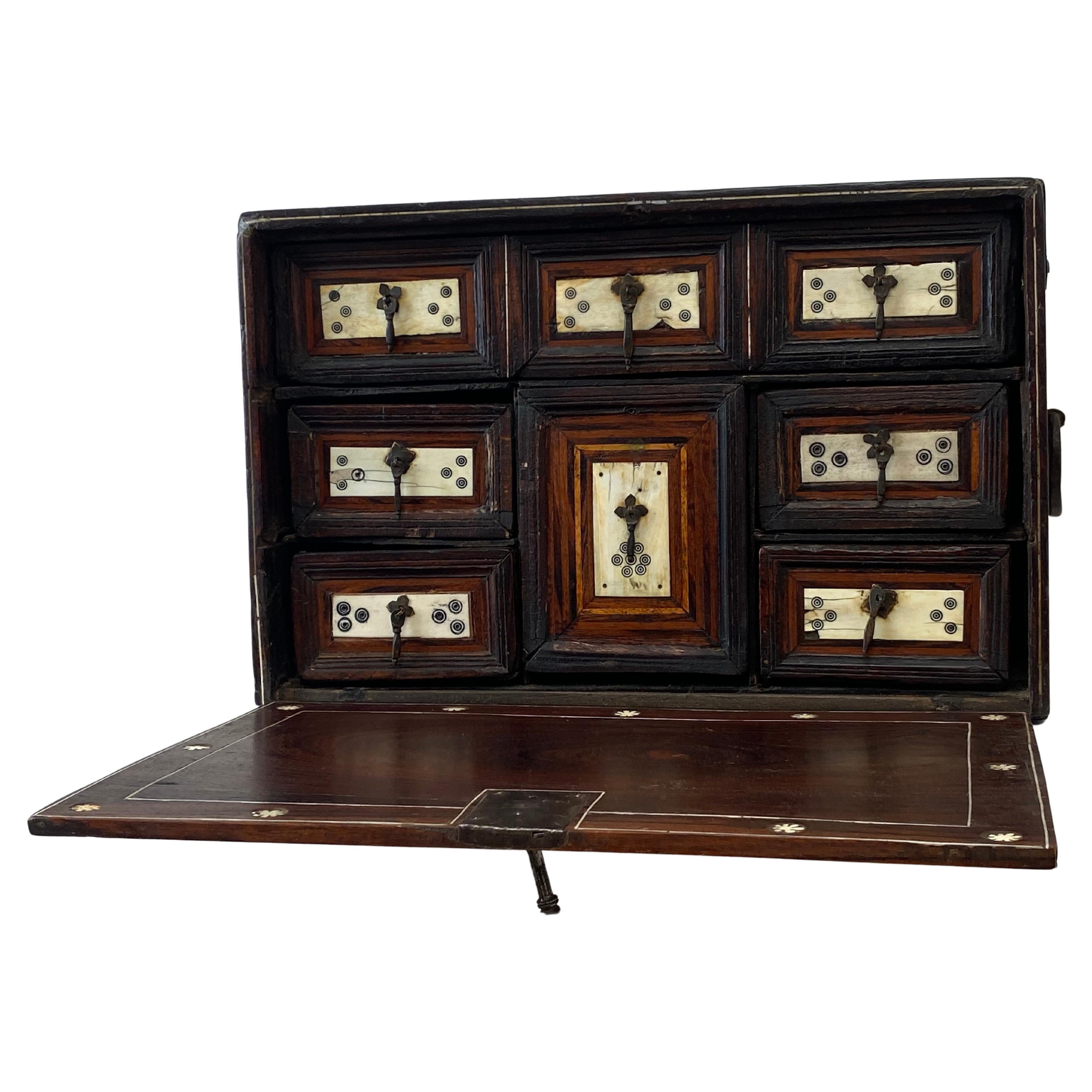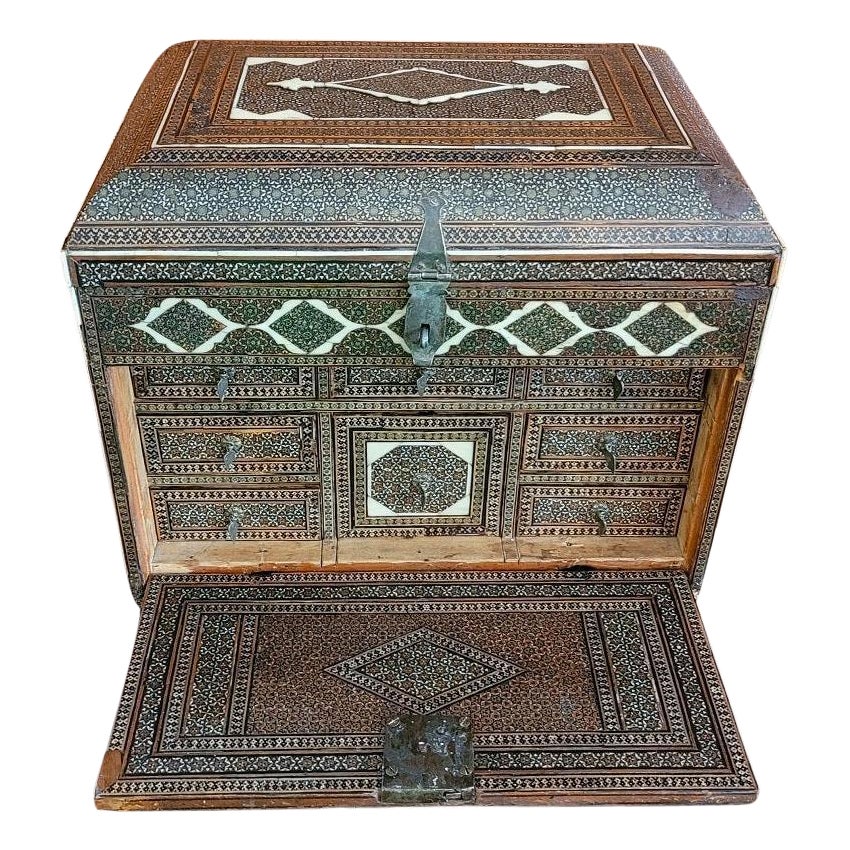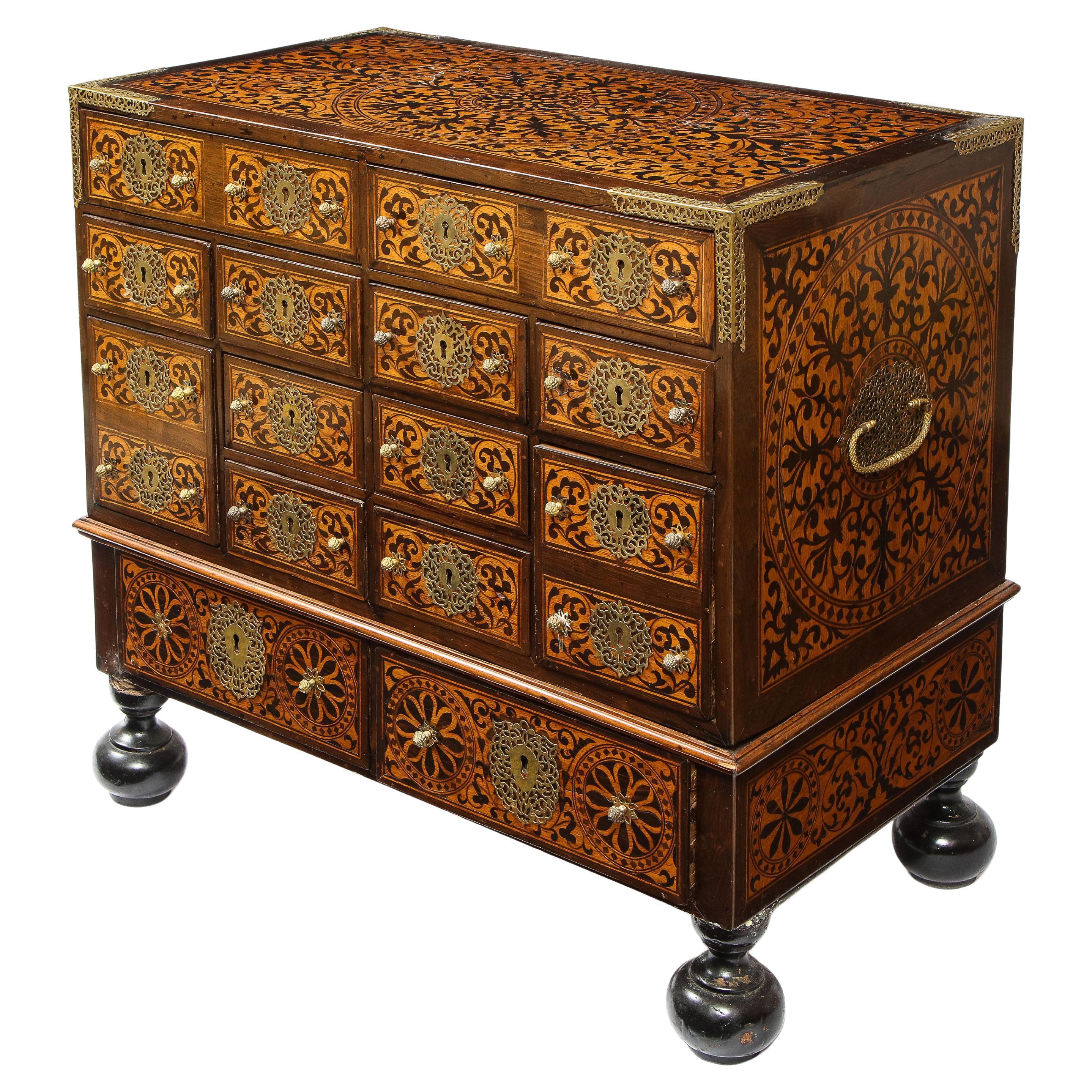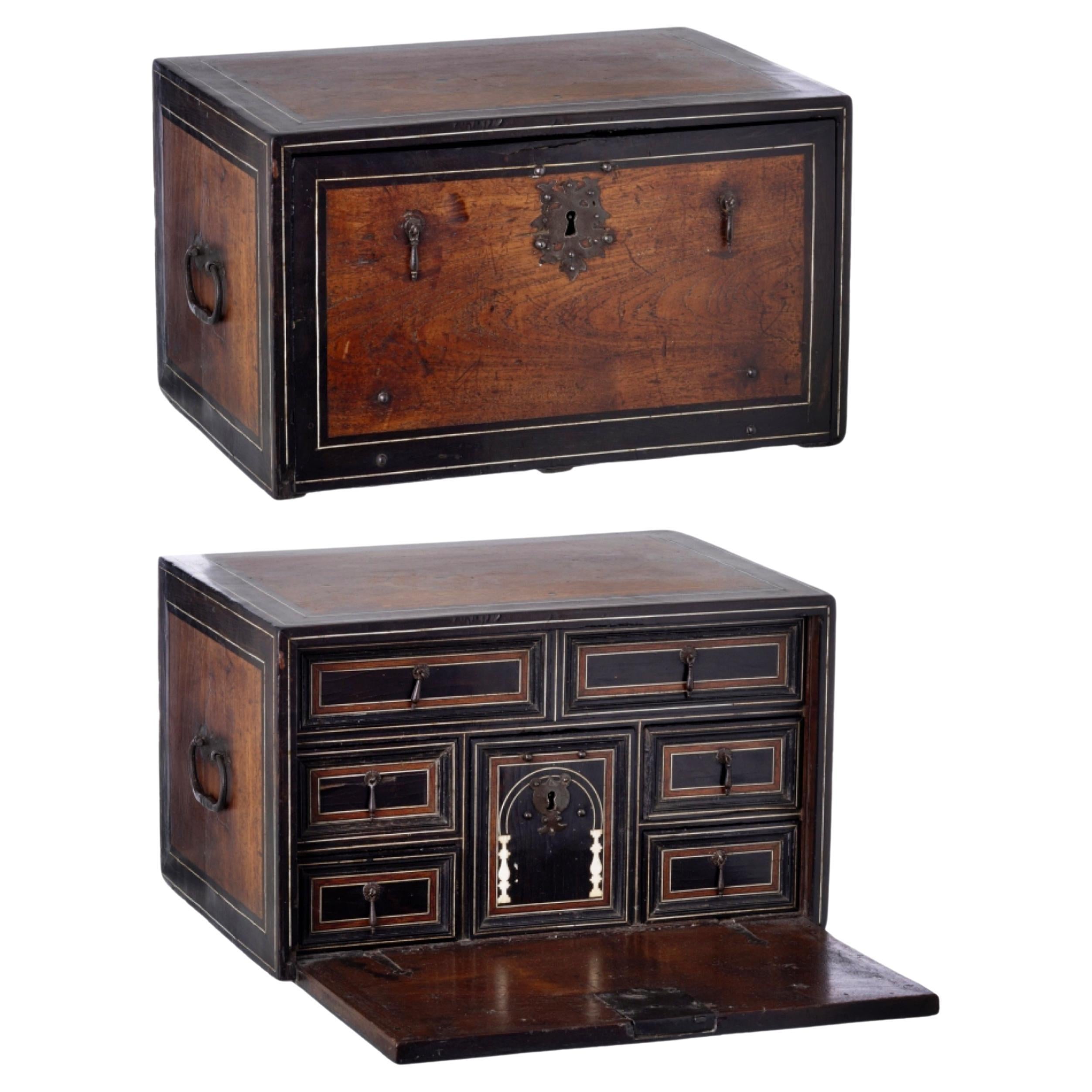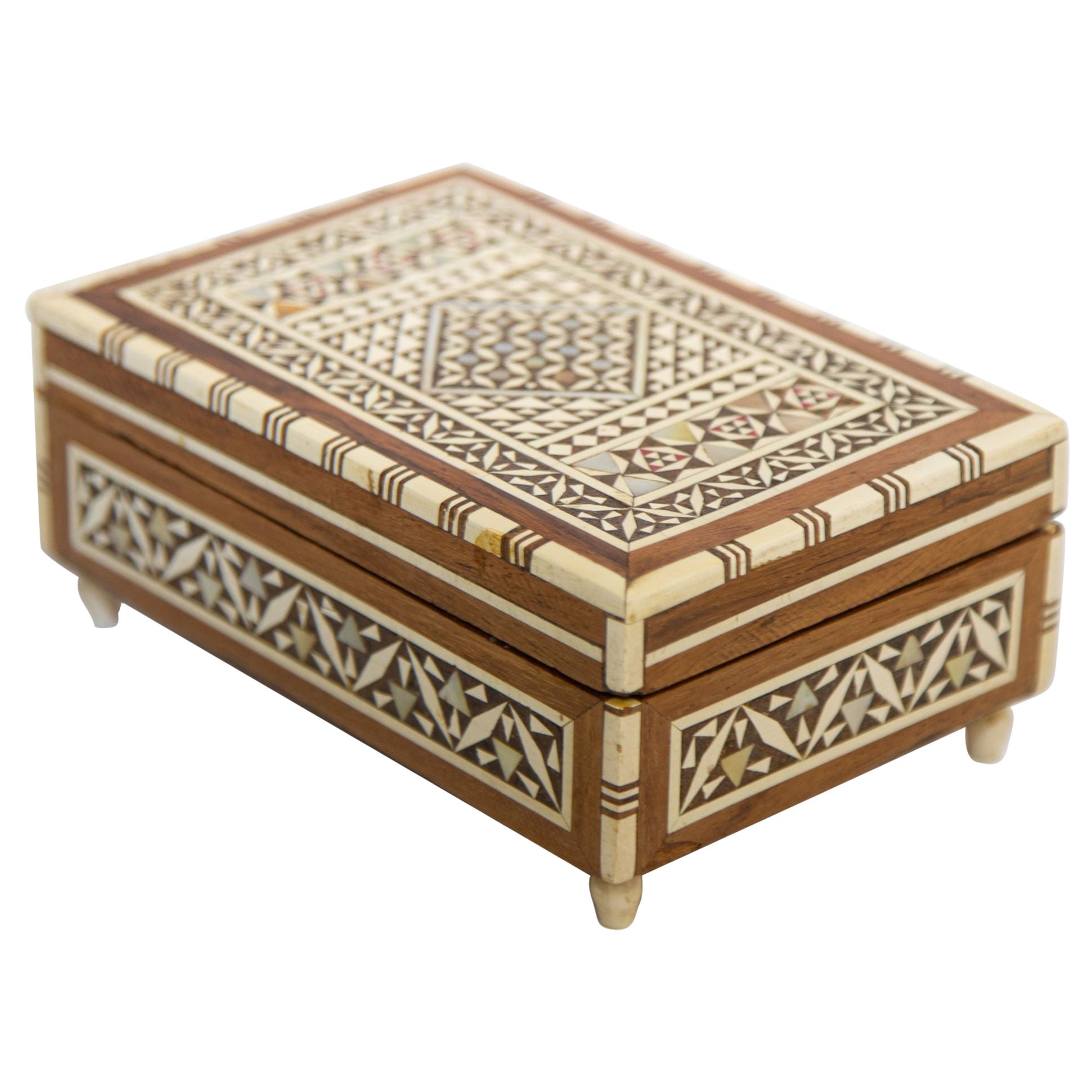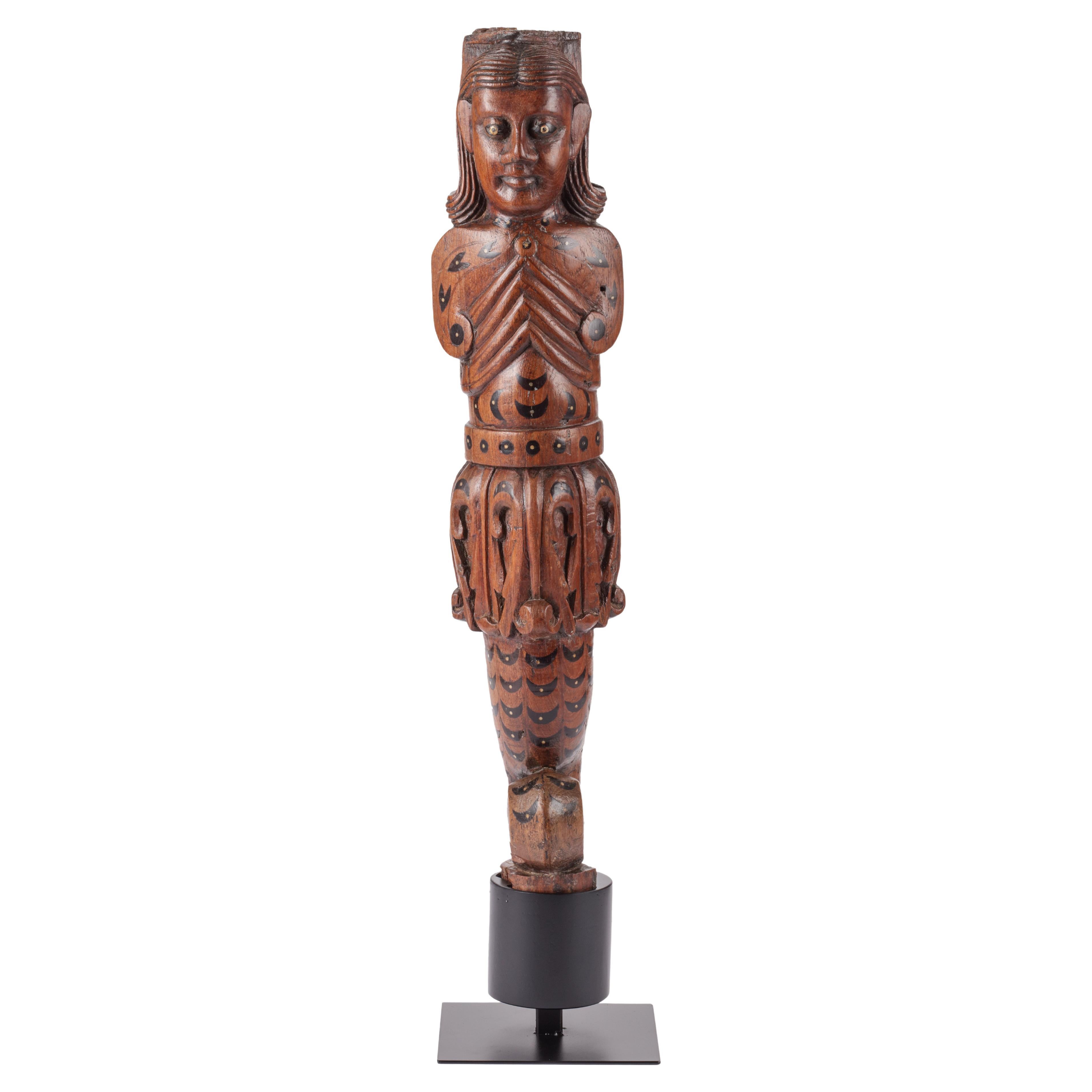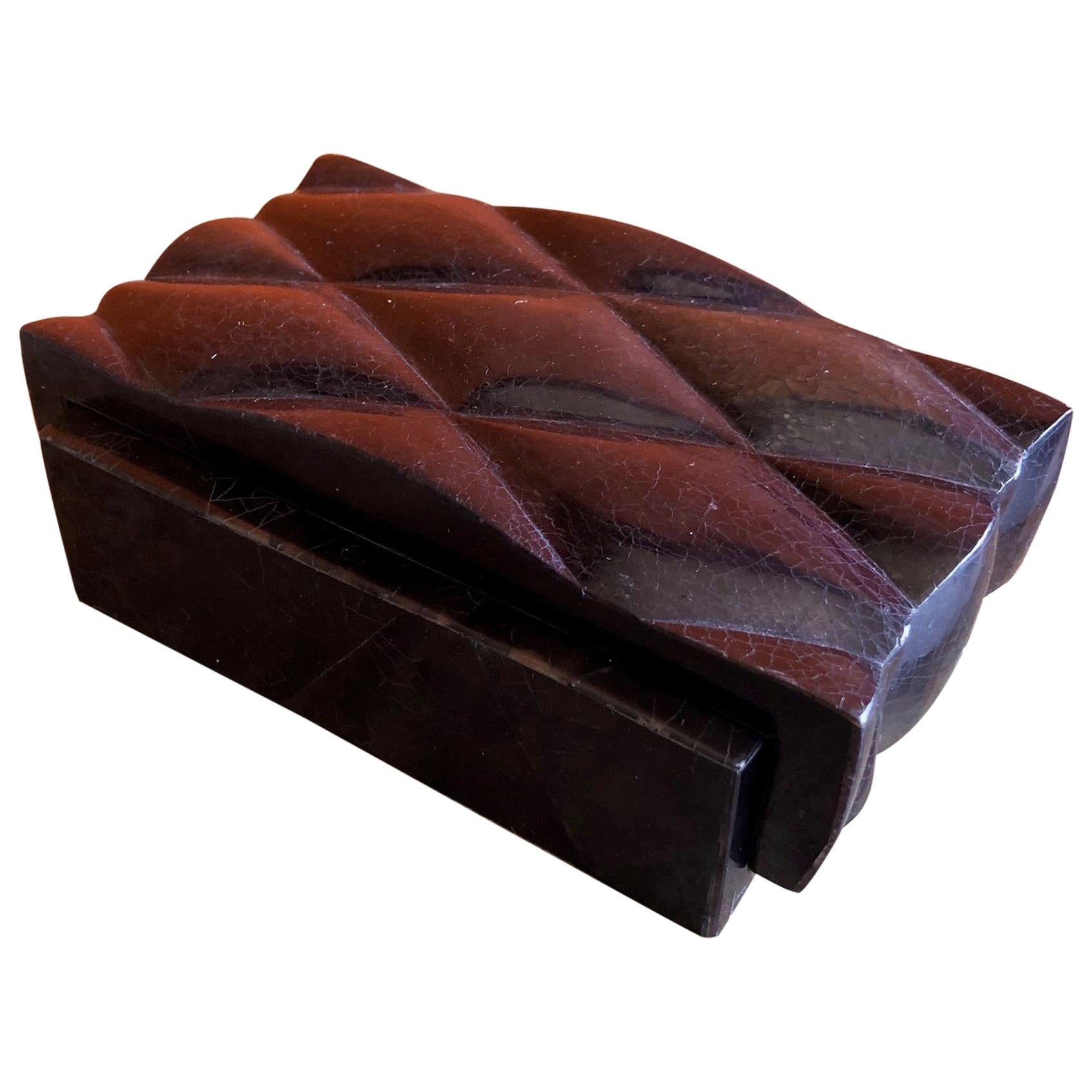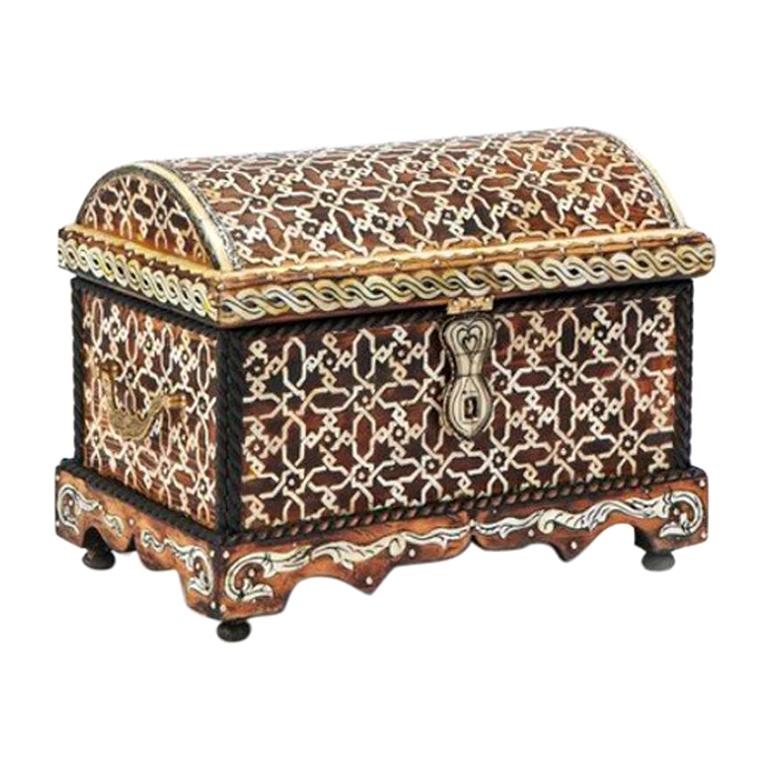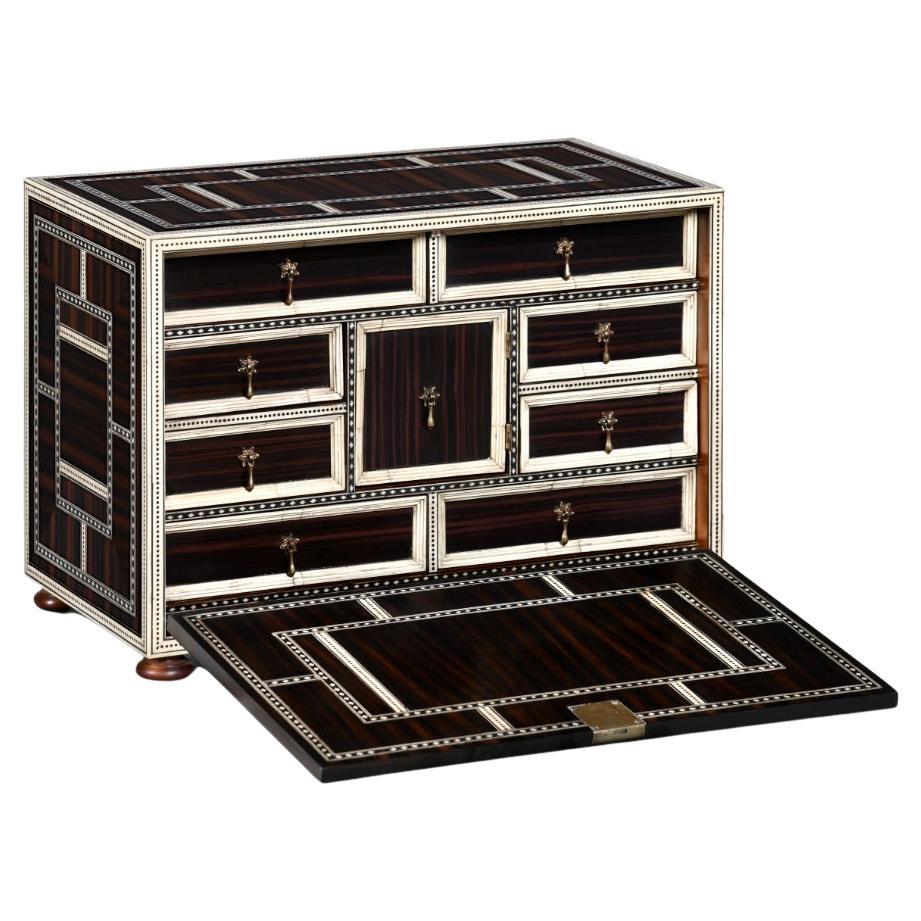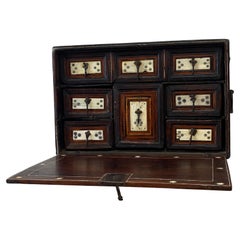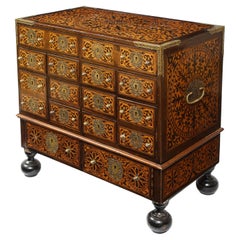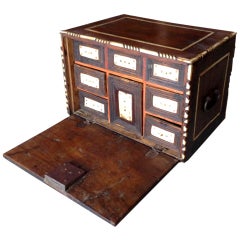
Indo-Portuguese Bone Inlaid Table Cabinet
View Similar Items
1 of 6
Indo-Portuguese Bone Inlaid Table Cabinet
About the Item
- Dimensions:Height: 9 in (22.86 cm)Width: 13 in (33.02 cm)Depth: 9 in (22.86 cm)
- Period:
- Date of Manufacture:18th Century
- Condition:Very Good.
- Seller Location:West Palm Beach, FL
- Reference Number:Seller: 76911stDibs: U1209108298597
You May Also Like
- Antique Indo-Portuguese Table CabinetLocated in Schellebelle, BEExceptional Indo-Portuguese table cabinet from the 17 th Century, the rare Cabinet is in a very good condition, has a hinged front and has 8 drawers, b...Category
Antique 17th Century Indian Models and Miniatures
MaterialsRosewood
- 18 C, Indo-Portuguese Vargueno Mini CabinetLocated in Dallas, TXPresenting a fabulously rare 18c Indo-Portuguese Vargueno mini cabinet. Extremely rare, highly important and desirable colonial piece ! It is an In...Category
Antique Late 18th Century Indian Anglo-Indian Decorative Boxes
MaterialsBrass
- Indo-Portuguese Brass-Mounted Hardwood and Indian Wood Marquetry CabinetLocated in New York, NYAn Indo- Portuguese brass-mounted hardwood and Indian Wood marquetry cabinet, Goa. Gorgeously made with hand-cut hardwood and the finest quality of othe...Category
Antique 1680s Indian Anglo-Indian Cabinets
MaterialsBrass
- COUNTER CASH Indo-Portuguese from the 17th centuryBy Europa AntiquesLocated in Madrid, ESCOUNTER CASH Indo-Portuguese from the 17th century in ebony rosewood and ivory. Top, sides and front decorated with ivory inlay. Folding top showing factory with six drawers and ...Category
Antique 17th Century Portuguese Renaissance Decorative Boxes
MaterialsEbony
- 16th-Century Indo-Portuguese Colonial Mother-of-pearl Gujarat CasketLocated in Amsterdam, NLAn exceptional Indo-Portuguese colonial mother-of-pearl veneered casket with silver mounts India, Gujarat, 2nd half of the 16th century, the silver mounts Goa or probably Lisbon Measures: H. 16 x W. 24.6 x D. 16.1 cm An exceptional Gujarati casket with a rectangular box and truncated pyramidal lid (with slopes on each side and a flat top) made from exotic wood, probably teak (Tectona grandis), covered with a mother-of-pearl mosaic. The tesserae, cut from the shell of the green turban sea snail (Turbo marmoratus, a marine gastropod) in the shape of fish scales, are pinned to the wooden structure with silver ball-headed nails. The casket is set on bracket feet on the corners. The masterfully engraved decoration of the silver mounts follows the most refined and erudite Mannerist repertoire of rinceaux and ferroneries dating from the mid-16th century. The high quality and refinement of the silver mounts and, likewise, the silver nails that replaced the original brass pins used to hold the mother-of-pearl tesserae in place indicate the work of a silversmith probably working in Lisbon in the second half of the 16th century. The Indian origin of this production, namely from Cambay (Khambhat) and Surat in the present state of Gujarat in north India, is, as for the last three decades, consensual and fully demonstrated, not only by documentary and literary evidence - such as descriptions, travelogues and contemporary archival documentation - but also by the survival in situ of 16th-century wooden structures covered in mother-of-pearl tesserae. A fine example is a canopy decorating the tomb (dargah) of the Sufi saint, Sheik Salim Chisti (1478-1572) in Fatehpur Sikri in Agra district in the state of Uttar Pradesh, north India. This is an artistic production, geometric in character and Islamic in nature, where usually the mother-of-pearl tesserae form complex designs of fish scales or, similar to the dishes also made using the same technique, with the thin brass sheets and pins, stylized lotus flowers. The truncated pyramidal shape corresponds, like their contemporary tortoiseshell counterparts also made in Gujarat, to a piece of furniture used in the Indian subcontinent within the Islamic world prior to the arrival of the first Portuguese. This shape, in fact, is very old and peculiar to East-Asian caskets, chests or boxes used to contain and protect Buddhist texts, the sutras. A similar chest is the famous and large reliquary chest from Lisbon cathedral that once contained the relics of the city's patron saint, Saint Vincent. Both match in shape, having the same kind of socle or pedestal and bracket feet, and in their engraved silver mountings, featuring the same type of refined, erudite decoration. Their differences lie in the silver borders that frame the entire length of the edges of the chest (both the box and the lid), pinned with silver nails, and on the lock plate, shaped like a coat of arms in the Lisbon example. Given the exceptional dimensions of the reliquary casket...Category
Antique 16th Century Indian Jewelry Boxes
MaterialsSilver
- Fine Antique Micro Mosaic Indo Persian Moorish Inlaid Trinket BoxLocated in North Hollywood, CAFine antique large handcrafted vintage marquetry Indo Persian wood inlay micro mosaic with miniature hand painted scene. Fine Antique handcrafted precious box micro mosaic inlaid in geometric design and with a miniature Islamic painting scene of men on horses. This beautiful collectible Moorish box in covered with fine Moorish micro mosaic marquetry and the top is decorated with a miniature painting of a 19th century scene of Royal princes wearing traditional Royal Maharajas clothes and playing polo on horse. The box is very finely inlaid inside and out. These Middle Eastern Persian inlay boxes were used to store pens. Museum quality piece like the ones in Doris Duke Islamic Art Museum. Finely handcrafted khatam wooden box with very delicate micro mosaic marquetry from the ancient Persian technique of inlaying from arrangements of so many delicate pieces of wood, mosaic marquetry. Dimensions. Height: 2.25 in. Width: 8.25 in. Depth: 4 in. Circa 1940s, handcrafted in Asia. Moorish mosaic Marquetry wear consistent with age and use, one tiny piece missing on the inside corner, not visible when the box is closed. Great Islamic Art collector museum quality piece on this miniature painting on boxes. Anglo Indian Moorish style micro mosaic inlaid jewelry box with lid. Intricate inlaid Anglo Indian box with geometric Moorish Sadeli design in an rectangular shape form with micro mosaic marquetry, very fine artwork. Museum collector piece like the one in Doris Duke Islamic Art Museum. The repeating geometric patterns of Sadeli Mosaic are what give it beauty and richness. This decorative technique is a type of micro mosaic featuring repeating geometric patterns. A highly skilled craft, it has had a long history in India and the Middle East with early examples dating back to the 16th century. In the 1800s, it became popular as a decoration on a variety of boxes, card cases, and chess boards imported from India. Since Bombay became a center of making them, they became known as Bombay boxes. The ancient art of Sadeli Mosaic is said to have been introduced from Shiraz in Persia via Sind to Bombay, a long time before Indian boxes appeared. The designs on early boxes look deceptively simple. The fact is they emerged from a culture which had mastered geometry and understood how to generate a pattern from a set number of points. The patterns are so harmoniously combined that their incredible complexity isn’t immediately apparent to the viewer. About Khatam Artwork: Khatam is a Persian version of marquetry, art forms made by decorating the surface of wooden articles with delicate pieces of wood, metal and other natural substances precisely-cut geometrical shapes. Moorish Jewelry, Islamic Mosaic, Middle Eastern Mosaic, Micro Mosaic Inlay, Egyptian Jewelry Box...Category
Early 20th Century Lebanese Islamic Decorative Boxes
MaterialsFruitwood
Recently Viewed
View AllMore Ways To Browse
Bone Inlaid Cabinet
Inlaid Bone Box
Inlaid Bone Decorative Boxes
18th Century Portuguese Table
Indo Portuguese
Indo Portuguese Furniture
Indo Portuguese Antique Furniture
18th Century Portuguese Cabinet
Early 18th Century Portuguese Table
Cabinet Indo
Indo Portuguese Cabinets
Box Indo
Inlaid Portuguese Tables
Indo Portuguese Table
French Antique Box
French Antique Boxes
Boxes With Feet
Box With Feet
